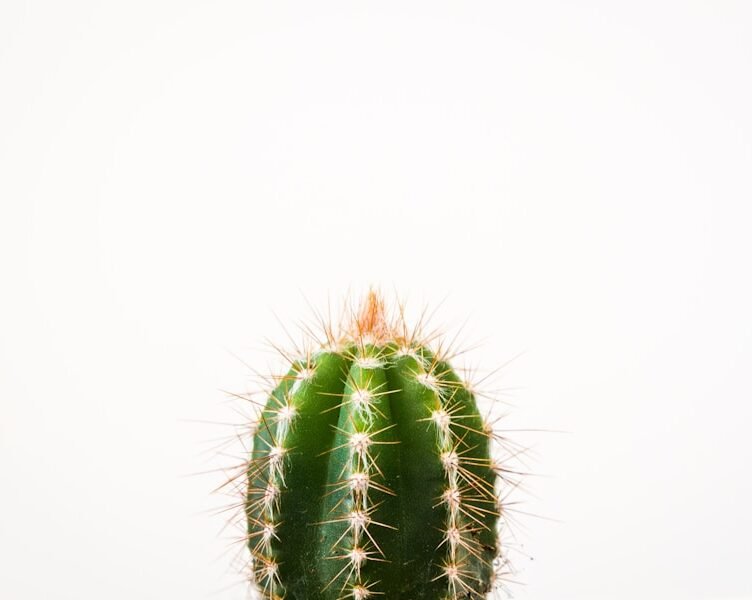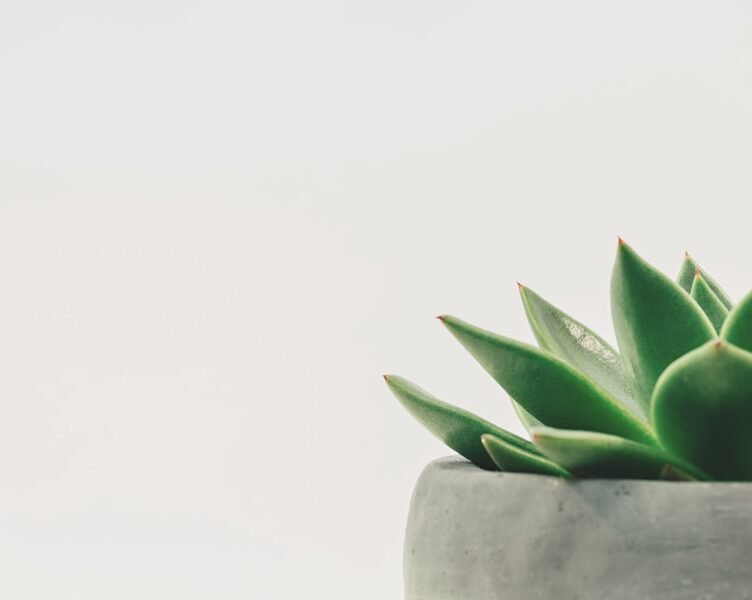Indoor plants have become a ubiquitous feature in many homes, and their popularity can be attributed to their multifaceted benefits. They not only enhance the aesthetic appeal of a room with their natural beauty but also provide several health advantages. In the bedroom, indoor plants can significantly improve air quality, mitigate stress, and promote better sleep quality.
The presence of plants in the bedroom creates a calming and relaxing ambiance, making it an ideal space to unwind after a long day. Furthermore, indoor plants can also regulate humidity levels, which is particularly beneficial in dry climates or during the winter months when the air tends to be drier. Beyond their visual appeal, indoor plants have been scientifically proven to have a positive impact on mental health.
Research has shown that proximity to plants can reduce stress and anxiety levels, improve mood, and enhance overall well-being. Given these benefits, it is no surprise that many individuals are eager to incorporate indoor plants into their bedroom decor. However, it is essential to exercise caution when selecting plants for the bedroom, as not all indoor plants are suitable for this space.
Key Takeaways
- Some indoor plants may release carbon dioxide at night, which can be harmful in the bedroom.
- Certain indoor plants can trigger allergies and respiratory issues in the bedroom.
- Some indoor plants are toxic to pets and children, posing a risk in the bedroom.
- Consider low-maintenance, non-toxic plants like snake plants and peace lilies for the bedroom.
- Choose indoor plants that promote relaxation and air purification for a healthy bedroom environment.
Potential Health Risks of Certain Indoor Plants
Potential Health Risks
Some indoor plants can release allergens or irritants that may exacerbate respiratory issues or allergies, particularly in a confined space like the bedroom. Additionally, some plants can be toxic if ingested, which can pose a serious risk to children or pets.
The Importance of Research
It’s crucial to do thorough research before bringing any new plant into the bedroom to ensure that it is safe and suitable for this environment. In some cases, certain indoor plants can also release volatile organic compounds (VOCs) into the air, which can contribute to indoor air pollution.
VOCs and Indoor Air Pollution
VOCs can cause a range of health issues, including headaches, dizziness, and respiratory irritation. Therefore, it’s important to choose indoor plants that have been shown to improve air quality and promote better health, rather than potentially causing harm.
Creating a Safe and Healthy Bedroom Environment
By being mindful of the potential health risks associated with certain indoor plants, it’s possible to create a safe and healthy bedroom environment that promotes well-being and relaxation.
Allergies and Indoor Plants in the Bedroom
For individuals who suffer from allergies, it’s important to be cautious when selecting indoor plants for the bedroom. Some plants can release pollen or other allergens that may trigger allergy symptoms, such as sneezing, congestion, or itchy eyes. This can be particularly problematic for individuals who have seasonal allergies or sensitivities to certain types of plants.
It’s essential to choose indoor plants that are less likely to cause allergic reactions, such as those with low pollen production or minimal airborne irritants. In addition to considering the potential allergenic properties of indoor plants, it’s also important to be mindful of any existing allergies within the household. For example, if someone in the home has a known allergy to a specific type of plant, it’s best to avoid bringing that plant into the bedroom.
By being proactive and considering potential allergy triggers, it’s possible to create a bedroom environment that is comfortable and free from allergens. With careful consideration and planning, it’s possible to enjoy the benefits of indoor plants in the bedroom without exacerbating allergy symptoms.
Toxicity of Certain Indoor Plants
| Indoor Plant | Reason to Avoid |
|---|---|
| Snake Plant | Produces oxygen at night, which may disturb sleep |
| Peace Lily | May cause allergic reactions in some individuals |
| English Ivy | Can be toxic if ingested by pets or children |
| Dieffenbachia | Contains toxic compounds that can cause irritation |
In addition to potential allergens, some indoor plants can also be toxic if ingested. This can be particularly concerning in households with young children or pets, who may be more likely to explore and potentially ingest plant leaves or flowers. It’s important to choose indoor plants that are non-toxic and safe for both humans and animals, especially in spaces like the bedroom where there may be limited supervision.
Some common indoor plants that are known to be toxic include lilies, philodendrons, and peace lilies. To ensure the safety of everyone in the household, it’s crucial to research the toxicity of any indoor plant before bringing it into the bedroom. This can help prevent accidental ingestion and potential poisoning, as well as provide peace of mind for parents and pet owners.
By choosing non-toxic indoor plants, it’s possible to enjoy the beauty and benefits of greenery in the bedroom without worrying about potential harm to loved ones.
Best Indoor Plants for the Bedroom
When it comes to selecting indoor plants for the bedroom, there are several options that are known for their air-purifying properties and low allergenic potential. Some popular choices include snake plants, spider plants, and peace lilies. These plants are not only aesthetically pleasing but also have been shown to improve air quality by removing toxins from the air.
Additionally, they are relatively low-maintenance and can thrive in low-light conditions, making them ideal for bedrooms with limited natural light. Another excellent option for the bedroom is the aloe vera plant, which is known for its soothing properties and ability to improve air quality. Aloe vera is also non-toxic and safe for both humans and pets, making it an excellent choice for households with children or animals.
Other suitable options include English ivy, bamboo palm, and rubber plants, all of which have been shown to have air-purifying benefits and minimal allergenic potential.
Tips for Choosing Safe Indoor Plants for the Bedroom
Safety First
It’s crucial to choose plants that are non-toxic and safe for both humans and pets, particularly in households with young children or animals. Additionally, it’s essential to consider any potential allergens or irritants that may be released by certain types of plants.
Environmental Conditions
The specific conditions of the bedroom must also be taken into account, such as natural light levels and humidity levels. Some indoor plants thrive in low-light conditions, while others require more sunlight to thrive. Additionally, some plants are better suited for humid environments, while others prefer drier conditions.
Thriving in the Bedroom
By considering these factors, it’s possible to choose indoor plants that will thrive in the bedroom environment.
Creating a Healthy and Relaxing Bedroom Environment with Indoor Plants
With careful consideration and planning, it’s possible to create a healthy and relaxing bedroom environment with the addition of indoor plants. By choosing non-toxic and low-allergenic plants that have air-purifying benefits, it’s possible to improve air quality and promote better sleep. Additionally, the presence of indoor plants can help reduce stress and anxiety, creating a calming atmosphere that is conducive to relaxation.
To maximize the benefits of indoor plants in the bedroom, it’s important to care for them properly and ensure that they receive adequate light and water. Regular maintenance and proper care will help ensure that indoor plants thrive and continue to provide their health benefits. By creating a healthy and relaxing bedroom environment with indoor plants, it’s possible to enjoy improved well-being and a greater sense of tranquility in this important space.
In conclusion, while there are numerous benefits to incorporating indoor plants into the bedroom, it’s important to be mindful of potential health risks associated with certain types of plants. By choosing non-toxic and low-allergenic options that have air-purifying benefits, it’s possible to create a safe and healthy bedroom environment that promotes well-being and relaxation. With careful consideration and planning, it’s possible to enjoy all of the benefits that indoor plants have to offer without compromising on safety or comfort in the bedroom.
FAQs
What are some indoor plants that should be avoided in the bedroom?
Some indoor plants that should be avoided in the bedroom are those that release large amounts of carbon dioxide at night, such as orchids and succulents.
Why should certain indoor plants be avoided in the bedroom?
Certain indoor plants should be avoided in the bedroom because they release carbon dioxide at night, which can affect the quality of air in the room and potentially disrupt sleep.
Are there any benefits to having indoor plants in the bedroom?
Yes, there are benefits to having indoor plants in the bedroom, such as improving air quality, reducing stress, and adding a natural element to the space.
What are some indoor plants that are suitable for the bedroom?
Some indoor plants that are suitable for the bedroom are snake plants, peace lilies, and spider plants, as they release oxygen at night and can help improve air quality.







1 Comment